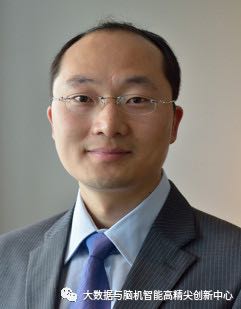题 目:Controlling Human Microbiota
时 间:2018年5月9日(星期三) 10:00-12:00
地 点:新主楼G849
报 告 人:哈佛大学医学院 Yang-Yu Liu教授
主办单位:大数据科学与脑机智能高精尖创新中心

[报告人简介]:
In this talk we present explicit local time-stepping schemes with second and third order accuracy for the shallow water equations. The system is discretized in space by a C-grid staggering method, namely the TRiSK scheme adopted in MPAS-Ocean, a global ocean model with the capability of resolving multiple resolutions within a single simulation. The time integrations are designed based on the strong stability preserving Runge-Kutta methods, but different time step sizes can be used in different regions of the domain and are only restricted by respective local CFL conditions. The proposed local time-stepping schemes preserve all important properties in the discrete sense, such as exact conservation of the mass and potential vorticity and conservation of the total energy within time-truncation errors. Extensive numerical tests are presented to illustrate the performance of the proposed algorithms.

[报告摘要]:
We coexist with a vast number of microbes—our microbiota—that live in and on our bodies, and play an important role in human physiology and diseases. Many scientific advances have been made through the work of large-scale, consortium-driven metagenomic projects. Despite these advances, there are still many fundamental questions regarding the dynamics and control of microbiota to be addressed. Indeed, it is well established that human-associated microbes form a very complex and dynamic ecosystem, which can be altered by drastic diet change, medical interventions, and many other factors. The alterability of our microbiome offers opportunities for practical microbiome-based therapies, e.g., fecal microbiota transplantation and probiotic administration, to restore or maintain our healthy microbiota. Yet, the complex structure and dynamics of the underlying ecosystem render the quantitative study of microbiome-based therapies extremely difficult. In this talk, I will discuss our recent theoretical progress on controlling human microbiota
from dynamical systems and control theory perspectives [1-8].
[References]:
[1] Bashan A, Gibson TE, Friedman J, Carey VJ, Weiss ST, Hohmann EL, Liu Y-Y. Universality of Human Microbial Dynamics.
Nature 2016;534:259-262
[2] Gibson TE, Bashan A, Cao H-T, Weiss ST, Liu Y-Y.
On the Origins and Control of Community Types in the Human Microbiome.
PLoS Computational Biology 2016;12 (2):e1004688.
[3] Cao H-T, Gibson TE, Bashan A, Liu Y-Y.
Inferring Human Microbial Dynamics from Temporal Data: Pitfalls and Lessons.
BioEssays 2017;39(2):1600188.
[4] Xiao Y, Angulo MT, Friedman J, Waldor MK, Weiss ST, Liu Y-Y.
Mapping the ecological networks of microbial communities from steady-state data.Nature Communications 2017;8:2042.
[5] Chen Y, Angulo MT, Liu Y-Y.
Revealing complex ecological dynamics via symbolic regression.
bioRxiv: https://doi-org-443.e.buaa.edu.cn/10.1101/074617
[6] Tian L, Wu AK, Friedman J, Waldor MK, Weiss ST, Liu Y-Y.
Deciphering Functional Redundancy in the Human Microbiome.
bioRxiv: https://doi-org-443.e.buaa.edu.cn/10.1101/176313
[7] Gibson TE, Carey V, Bashan A, Hohmann EL, Weiss ST, Liu Y-Y.
On the Stability Landscape of the Human Gut Microbiome: Implications for Microbiome-based Therapies
bioRxiv: https://doi-org-443.e.buaa.edu.cn/10.1101/176941
[8] Angulo MT, Moog CH, Liu Y-Y.
Controlling microbial communities: a theoretical framework.
bioRxiv: https://doi-org-443.e.buaa.edu.cn/10.1101/149765
